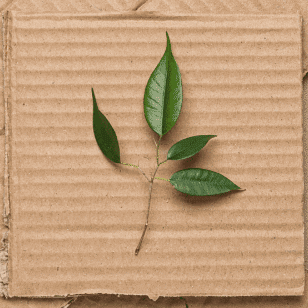The Cost of Sustainable Packaging
Here we break down just what sustainable packaging is and why it pays to use it.
Here we break down just what sustainable packaging is and why it pays to use it.
It is possible to take a holistic approach to your packaging and be both sustainable and profitable at the same time. Making the switch to sustainable packaging can, in fact, improve your bottom line. It can reduce your plastic footprint and extend the life cycle of products.
That’s just a snapshot of why it pays to use sustainable packaging. Read on for the full lowdown on the cost of sustainable packaging.

Firstly, it’s important to understand what sustainable packaging actually is. In a nutshell, sustainable packaging is packaging that is better for the environment. The drive towards sustainable packaging stems from circular economy models. Instead of designing packaging for manufacturability (or should we say profitability?), sustainable packaging is designed with the end of life in mind – be it reuse, recycling or even composting.
It’s important that sustainable packaging performs equally well, if not better than non-sustainable alternatives. After all, the main purpose of packaging is to protect the goods inside. There should be no comprising when it comes to the design and quality of sustainable solutions. Sure, sustainable packaging can come in a variety of shapes, sizes and materials. But compostable pouches, recyclable packaging and mono-material packaging are some of the most common and most effective sustainable packaging solutions used across various industries.
At present, sustainable packaging is usually more expensive than conventional packaging materials. The reason for this is simply because pricing is affected by supply and demand, which is one of the main problems with recycling plastic. Take virgin plastics for example. It’s much cheaper to buy and produce virgin plastics. There is greater demand compared to recycled plastics. In 2019, the price of recycled plastic was £57 a tonne higher than that of its virgin alternative, non-food approved.
However, it’s worth noting that the costs are usually much lower for brands compared to suppliers given their initial upfront costs. As brands are usually lower downstream on the supply chain, it’s around 1% on costs. On the other hand, it’s around 10% of the costs for manufacturers. But at the end of the day, it’s difficult to give a clear-cut answer on the cost of sustainable packaging. It will entirely depend on the scale of production, research and development costs, as well as the fluctuating price of packaging materials.
Whilst it’s difficult to establish an exact monetary value for eco-friendly solutions, it’s clear that the benefits outweigh the costs of sustainable packaging. Of course, there’s the obvious reason to become more sustainable – to protect the environment.
Simply shifting to sustainable plastics can make a world of difference and help to reduce your business’ ecological footprint. Our life cycle assessment of different packaging materials with the consulting firm Trayak, overseen by the Pet Sustainability Coalition, revealed that switching from PET/PETMET/PE to TOPE/PE with EVOH could reduce greenhouse gas emissions by 22.75% and water consumption by 20.11%.
More than that, making the switch could potentially increase your revenue. Consumers today are more conscious of the impact that packaging has on the environment. If recycled plastics become more sought-after, we can’t help but think of the improved costs for businesses. Now we’re on the far side of the COVID-19 pandemic, sustainability is a top priority once again.
In fact, 47% of consumers say they would refuse to buy products in packaging that are harmful to the environment. With this in mind, it’s no longer a question of if your brand should use sustainable packaging solutions, but when and how.
What’s more, 74% of consumers are willing to pay more for products with sustainable packaging. And a further 25% say they are prepared to pay an additional 10% or more to meet their personal sustainability standards. If consumers are willing to pay more for products in eco-friendly packaging, this could potentially offset the increased costs associated with becoming more sustainable.
Still not sure about the cost of sustainable packaging? Don’t worry! We at Tyler Packaging are committed to driving a circular economy. We’ll work with you to design and produce high-quality, sustainable packaging solutions that protect your products and the planet. Get in touch and see how we can help you make the switch today.
Want to know more about how our packaging solutions can help your business with its goals? Fill in the form and we’ll get back to you as soon as we can.